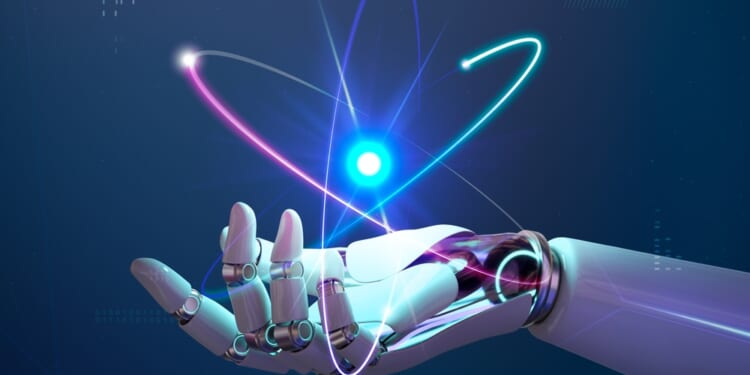Nuclear Energy Now tracks the latest nuclear energy developments across technology, diplomacy, industry trends, and geopolitics.
Hungary In Talks to Buy US Nuclear Fuel
Hungary has announced plans to begin talks with the United States on purchasing nuclear fuel, part of a larger effort to meet growing energy needs and diversify its supply. The Hungarian government has faced criticism for its continued energy purchases from Moscow despite the European Union’s push for strategic autonomy and energy security. Currently, the Paks Nuclear Power Plant, which operates four Russian-built VVER 440 reactors, is supplied by Russian fuel. While Budapest plans to continue those purchases, it has been seeking alternatives—signing a contract last October with France’s Framatome for nuclear fuel deliveries for the Paks plant beginning in 2027. Now, Hungarian Foreign Minister Peter Szijjarto is meeting with the Department of Energy (DOE) and Westinghouse to explore new fuel supply options for Hungary’s expanding nuclear program. This builds on a letter of intent signed earlier this year by Hungary’s nuclear firm Hunatom and Poland’s Synthos Green Energy to cooperate on constructing up to ten BWRX-300 small modular reactors (SMRs)—a design developed by US-based GE Vernova. A potential US fuel deal, layered on top of this SMR collaboration, could strengthen the US-Hungarian relationship and draw Hungary towards US nuclear technologies.
Japan’s New Prime Minister Will Seek to Revive Nuclear Power Plants
Japan’s new prime minister, Sanae Takaichi, will continue to push for increasing Japan’s capacity of nuclear energy and other renewables. Building on former prime minister Shigeru Ishiba’s approach of boosting renewables while restarting reactors, Takaichi will seek to accelerate the revival of nuclear energy power plants to reduce Japan’s dependence on expensive energy imports. Imported energy supplies approximately two-thirds of Japan’s electricity generation, and has been a major source of inflation, which undermined support for the Liberal Democratic Party and former prime minister Ishiba. During President Donald Trump’s upcoming visit to Japan, the two countries are expected to sign an agreement to cooperate on advanced technologies, including nuclear energy and artificial intelligence (AI). The Japanese government is also expected to pitch other energy purchases, such as liquefied natural gas, during the visit. Yet, Takaichi’s pro-nuclear agenda faces local resistance. Tokyo Electric Power Company (TEPCO) has been planning the restart of the Kashiwazaki-Kariwa plant, one of the world’s largest nuclear power plants, but the revival remains mired in public opposition despite the lifting of its operational ban in 2023. Japan’s Nuclear Regulation Authority has previously banned TEPCO from operating the facility due to safety concerns. While the operational ban was lifted, TEPCO will still require approval from the Niigata prefecture, the city of Kashiwazaki, and Kariwa. Takaichi will face the challenge of lifting public opinion regarding nuclear energy, given the public’s skepticism that still shadows Japan’s nuclear revival even fourteen years after Fukushima.
Arkansas is Considering a New Nuclear Power Plant
Arkansas has taken a first step toward expanding its nuclear energy portfolio. The government has engaged Maryland-based Excel Services Corporation to conduct a ten-month feasibility study on the potential development of new nuclear energy generation within Arkansas. The study will evaluate economic, environmental, and workforce implications of introducing advanced nuclear technologies, and assess siting and safety. The review will also consider various reactor options, including large reactors, SMRs, and micro reactors. Arkansas currently hosts two pressurized water reactors at the Arkansas Nuclear One plant, which supplies approximately 24 percent of the state’s electricity. While the feasibility study does not guarantee new construction, it reinforces the growing momentum among US states to push for nuclear energy, particularly in light of AI’s growing power demands.
Russia Deploys Robotics in Nuclear Energy Projects
Russia is improving its efficiency in nuclear construction through the launch of a new “spider” robotic system. The robot, launched under Rosatom’s engineering division, is designed to conduct ultrasonic inspections of welded joints, up to 30 centimeters thick, in nuclear reactors. It has so far proved to be up to three times faster than previous methods used by Rosatom. The company says it can be used in construction, inspections, and decommissioning, and is novel because the robot can be used to reach various angles and difficult-to-reach places. This new high-tech agenda will allow Rosatom to improve quality control and reduce construction timelines, important improvements for a sector that often faces delays and high costs. The adoption of advanced robotics into nuclear energy construction will also likely strengthen Russia’s manufacturing services, giving it an edge as a supplier of high-end nuclear engineering technology and raising the bar for other nuclear exporters. For countries seeking advanced systems, the ability to inspect, commission, and maintain reactors using state-of-the-art robotics may tip the balance in favor of Russian offers—especially in markets where local talent is limited or not yet existent on a wide scale.
About the Author: Emily Day
Emily Day is an experienced researcher, writer, and editor with expertise in geopolitics, nuclear energy, and global security. She is an Associate Editor of Energy World and Techland at The National Interest and a Senior Research Associate at Longview Global Advisors, where she provides insights on global political and economic trends with a specialization in utilities, risk, sustainability, and technology. She was previously a Della Ratta Energy and Global Security Fellow at the Partnership for Global Security.
Image: Rawpixel.com/shutterstock

















